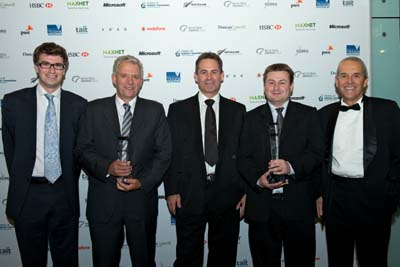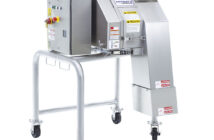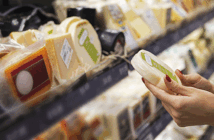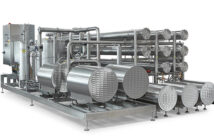By Chris Smith
Judges at the New Zealand Hi-Tech Awards in May described Compac Sorting Equipment as “the Rolls Royce of its industry”, citing its “laser-focused priority on market-driven R&D” as a key reason for its global success.
In 2001 Compac completed the first commercial installation of its market-leading InVision 9000 blemish grading system for a citrus customer in California.
And in 2003 the company installed one of the largest sorting lines in the world – a 40 lane by 60 metre-long pre-grade line with the InVision 9000 blemish system and a 12 lane by 70 metre packing line – for Sun Pacific in California.
This 40 lane line for mandarins and oranges is capable of sorting 400 fruit per second, amounting to around 1.4 million fruit per hour.
The latest offshore success for the company is a US$15 million order from the US. “Bigger than a football field, this is a 40 lane, 100 metre long turnkey sorting system that will handle 20 million mandarins a day,” says R&D manager, director and 16 year veteran of the company, Nigel Beach.
“The longest design we have done in the past is 80 metres.”
“We have a team of more than 50 engineers, covering a variety of disciplines, from mechatronics to electronics to software. Our systems are fairly modular so up-scaling them is not a problem as we have software in place that will actually design the lines a customer wants,” says Mr Beach.
The company was founded in 1984 by Hamish Kennedy who grew up on a kiwifruit orchard in Kerikeri.
While completing a master’s degree in electrical engineering, he designed and built an electronic sizer and packing line for his family’s kiwifruit packing operation.
The machine was a great success and he was asked to build more sizers for neighbours and others in the industry seeking accuracy of sizing and innovation in fruit packing.
From this start in the family orchard, Compac has grown to be a global leader in the development of fruit and vegetable sorting technology with operations now across the globe, including North and South America, Asia and Europe. The company employs more than 300 people worldwide.
In 1991, the first export order was landed – an 8 lane unit installed for the largest kiwifruit packer in France. In 1993 Compac released the revolutionary roller-carrier system, which combines the functions of rotation for singulation and a new optical system, with precision 4 point weighing and dual-side tipping of fruit to the desired outlet on a single conveyor.
The patented carrier is considered by the fruit industry as one of the most versatile and flexible designs available and is able to handle a wide range of produce. In 1995 the first Compac sizers were installed in the United States.
A government grant in 1998 helped the company develop a method of testing fruit for sweetness using NIR (Near Infrared) technology.
“Since then we have developed technology for not only blemish grading and frost sorting, but sugar testing, plus increased software functionality for standard colour and weight produce sorting,” says Mr Beach.
NIR sorting uses a light source focused to illuminate a piece of fruit as it passes under the NIR system. Some of the light penetrates the fruit and is retransmitted – this effect can be observed by holding fruit to a bright lamp in a dark room. The fruit will glow at a distance from where the light is shining on it.
The colour of the transmitted/reflected light is affected by the internal properties of the fruit.
A high brix (a measure of taste/sweetness) fruit will absorb more light at certain wavelengths than a low brix fruit. This colour difference, too subtle to be seen by the human eye, contains information about the internal properties of the fruit.
The fruit reflection is measured by a spectrometer. This is an extremely sensitive colour detector, used to measure the colour difference in the transmitted reflected light.
A digital signal processor (DSP) is used to process the information from the spectrometer and estimate the brix acid or other internal properties.
The information is processed by the sorting software and used as part of the fruit sorting information.
“The area of vision technology, electronics and software are key focuses for us as we further develop and enhance our product lines,” says Mr Beach.
In April 2008 Compac took a 50 percent stake in Hastings-based Fruit Handling Systems (FHS). This was the first time the company had invested in an already established company.
Fruit Handling Systems’ focus is on the production of infeed equipment and bin filling systems, which operate after the main Compac sorter. The partnership allowed Compac to further develop its turnkey solution strategy for customers.
For full details of the 2012 HiTech Awards:
Visit www.hitech.org.nz





























































































